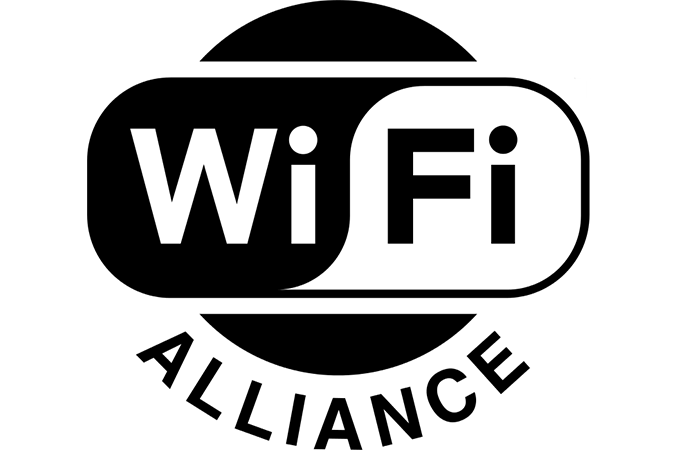Wi-Fi Naming Simplified: 802.11ax Becomes Wi-Fi 6
by Anton Shilov on October 3, 2018 4:30 PM EST- Posted in
- Networking
- 802.11ac
- 802.11n
- Wi-Fi
- 802.11ax
- Wi-Fi Alliance
- Wi-Fi 6

In a bid to simplify the naming of the current and future Wi-Fi standards and ensure that even unexperienced users buy the right equipment, Wi-Fi Alliance on Wednesday introduced a new naming approach for the Wi-Fi brand. From now on, major Wi-Fi standards will be publicly labeled by numbers instead of letters.
Nowadays PCs, smartphones, networking equipment, and other products that are equipped with a Wi-Fi controller are labeled using the name of the relevant IEEE standard; e.g. 802.11n, 802.11ac, or 802.11ax-compliant. While such naming scheme is accurate and convenient enough for experienced users, casual buyers do not always understand it, especially as standards have moved into two-letter suffixes. Which in turn has meant that buyers don't always grab the right combination of devices that provides the best performance (e.g., get a new PC with an 802.11ac card and an outdated 802.11n router). In a bid to simplify things going forward, the Wi-Fi Alliance and its members will use generation names instead of letters. As a result, the 802.11ax will be called Wi-Fi 6.
| Wi-Fi Names and Performance | ||||||
| Naming | Peak Performance | |||||
| New Name | IEEE Standard |
1x1 Configuration |
2x2 Configuration |
3x3 Configuration |
||
| Wi-Fi 4 | 802.11n | 150 Mbps | 300 Mbps | 450 Mbps | ||
| Wi-Fi 5 | 802.11ac | 433 Mbps over 80MHz 867 Mbs over 160MHz |
867 Mbps over 80MHz 1.69 Gbps over 160MHz |
1.27 Gbps over 80 MHz 2.54 Gbps over 160 MHz |
||
| Wi-Fi 6 | 802.11ax | 867 Mbs over 160MHz depends |
1.69 Gbps over 160MHz on network |
2.54 Gbps over 160 MHz configuration |
||
While the new naming approach will undoubtedly improve clarity when it comes to major Wi-Fi releases and help end users to select the right set of equipment, it's worth noting that the new system doesn't try to distill every aspect of a Wi-Fi device's capabilities and configuration down to a single number. For example, the key advantage of the 802.11ax spec is not its peak AP-to-device bandwidth, but rather its peak overall “capacity” that will improve performance when working with both 802.11ax and 802.11ac devices. Furthermore, the performance of 802.11ac and 802.11ax devices depend on the number of channels they use and the number of spatial streams within those channels, so the simplified Wi-Fi names do not give a complete description of what devices are capable of.
Despite some uncertainties, simplification of Wi-Fi naming seems like a good move by Wi-Fi Alliance since it at least attempts to give casual users an overall understanding of general wireless networking capabilities.
Related Reading:
- Qualcomm Announces 802.11ax Access Point and Client Solutions
- Qualcomm Launches New GigaDSL, 802.11ac Wave 2 Chipsets
- Extending Home Networks - A Comparison of G.hn, HomePlug AV2 and Wi-Fi Mesh
- Multiple WiFi Encryption Vulnerabilities Disclosed, Affecting Almost Everything
- Wi-Fi HaLow: Long-Range, Low-Power Wi-Fi for Internet-of-Things Devices
Source: Wi-Fi Alliance










19 Comments
View All Comments
FreckledTrout - Wednesday, October 3, 2018 - link
The 2x2 configuration chart has some typos "1.69 Mbps over 160MHz".Kamus - Tuesday, October 9, 2018 - link
ax rolls of the tongue better.phoenix_rizzen - Wednesday, October 3, 2018 - link
So, how will they distinguish 2.4 GHz 802.11n from 5 GHz 802.11n? "Wifi 3.1 / 3.2?"And how will Wave 1 802.11ac be distinguished from Wave 2 802.11ac? "Wifi 5.1 / 5.2?"
And how will the number of spatial streams, MIMO streams, and MU-MIMO streams be distinguished? More numbers after the generation?
There's a lot more to a wireless standard than can be compressed into a single number. Unless this gives the industry the impetus to release complete standards, and stop this horrid Wave 1 / Wave 2 crap. It's okay if there's a 5-year gap between generations.
phoenix_rizzen - Wednesday, October 3, 2018 - link
Sorry, 802.11n should be Wifi 4 above.Glaurung - Wednesday, October 3, 2018 - link
[[So, how will they distinguish 2.4 GHz 802.11n from 5 GHz 802.11n? "Wifi 3.1 / 3.2?"]]You're overthinking it. Today, "802.11.ac" is just as uninformative as "Wifi 5" when it comes to the technical nuances you're talking about. But it's a hell of a lot easier to parse "Wifi 5" than the alphabet soup it's replacing.
MrSpadge - Thursday, October 4, 2018 - link
+1nathanddrews - Thursday, October 4, 2018 - link
+2This is a very good thing, I just hope that the stick with it.
CaedenV - Wednesday, October 3, 2018 - link
This just reminds me that I need to replace my router. It was a first gen AC router, and even with adding more and more AC devices to the network over the years it pretty much always negotiates to an N connection :(Next time; Mesh network! Gotta get some of that ubiquity goodness in my home
A5 - Thursday, October 4, 2018 - link
The UBNT stuff works a lot better if you already ethernet drops all over the place. If not, something like Orbi or eero is better for most consumers.fred666 - Wednesday, October 3, 2018 - link
So are 802.11a, b and g WiFI 1, 2 and 3?